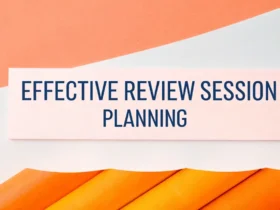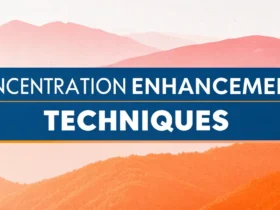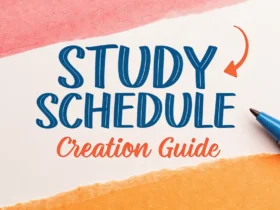Are you aiming for the highest grade possible on your next research paper? The secret isn’t just about the topic, but the how. Many students overlook the power of employing sound research methods, but mastering these techniques can transform a mediocre paper into an exceptional one.
This article will cut through the noise and provide practical, proven research methods that will impress your professors and boost your grades. We will explore different approaches for gathering and interpreting data, along with best practices for presenting your findings in a compelling and credible manner.
Ready to take your academic work to the next level? Then read on to discover the key strategies that separate the A+ papers from the rest.
Research Paper Methods That Earn Top Grades
Landing a top grade on a research paper often boils down to more than just insightful ideas, it’s about your approach. You have to plan, find data, look at the data, and tell others about what you learned. The right research methods can make all the difference between a passing grade and an outstanding one. This article will guide you through the top strategies and approaches you can use to write great papers.
Defining Research Methods in Academic Writing
Research methods are the specific techniques and processes you use to identify, select, process, and analyze information about a topic. They are the tools you use to gather evidence, test ideas, and draw conclusions.
In academic writing, the right research methods will give your work credibility, clarity, and depth. A good method will help you show that your claims are backed by solid data and careful analysis.
Why Method Matters
Why are sound research methods so important? Think of it like this: a building needs a solid base. Without it, it can fall. Your research methods are the foundation upon which your entire paper stands. A well-defined method:
- Boosts Credibility: Shows you have followed a logical and systematic approach.
- Enhances Clarity: Helps you present findings in a way that is easy to grasp and see.
- Provides Depth: Allows you to go deep into your topic, discovering things that would not have come up with casual study.
- Ensures Accuracy: Reduces the risk of bias and increases the truthfulness of your claims.
Planning Your Research: The Foundation for Success
Before diving into data, it’s key to spend time setting things up right. Good planning sets the stage for a strong paper. This part is often skipped. But if you do it right, it can make all the difference.
Defining Your Research Question
The heart of any research paper is the research question. The research question will point you toward the data you need and how you’ll look at it. A well-defined research question should be:
- Focused: Too wide and you will drown in data; too narrow and you may not have enough to work with.
- Answerable: Capable of being answered through research and analysis.
- Relevant: Pertinent to your field of study and have some significance.
For example, instead of asking “How does social media impact society?” a more focused question would be “How does the use of Instagram affect the self-esteem of young adults aged 18-25?”
Conducting a Preliminary Literature Review
Before settling on your research methods, do some reading! Read what others have written on your topic. A preliminary review of the literature will:
- Find gaps: See where more work needs to be done.
- Help narrow focus: Learn what’s already known, and what is worth studying.
- Find methods: See which methods other scholars have found useful for similar topics.
Use academic databases like JSTOR, Google Scholar, and university libraries to find these resources. Look for articles that are like your topic, and see how they work.
Choosing Your Research Approach
There are two main ways to study a topic: qualitative research and quantitative research. The type you pick depends on the topic you want to learn more about.
- Qualitative Research: Exploring ideas with non-numerical data like interviews, observations, and written work. This method aims to find out how things are, what people think, and how they act.
- Quantitative Research: Looking at numbers and stats. Includes surveys, tests, and analysis of existing number data.
Sometimes, you can mix them. You can do both to get a wide view of your topic. If you want to find solid numbers, pick quantitative. If you want to tell a story and learn about feelings, pick qualitative.
Creating a Research Timeline
Keep to a plan. Set up a calendar of deadlines for:
* Reading
* Gathering data
* Looking at data
* Writing
Break big tasks into smaller ones. This makes things less scary and helps you stay on task.
Gathering Your Data: Finding the Right Information
Picking the right research methods to gather the data you need is a key step. The right method makes finding the data easier and more useful. It can also point you in the right direction. The method you use should match your research questions and your approach to get the best results.
Surveys and Questionnaires
Surveys can get a lot of data from a lot of people. They are good for finding out what people think, what they feel, and how they act. When using surveys:
- Design Questions Carefully: Keep your questions clear, short, and focused. Avoid leading questions that push people to answer in a certain way.
- Pick Your Audience: Send your survey to people who can give you helpful data.
- Use Online Tools: SurveyMonkey, Google Forms, and Qualtrics make sending and tracking surveys easy.
- Pilot Test: Before sending out the survey to everyone, try it out on a small group. This can help you find problems with your questions or process.
Interviews
Interviews are useful for getting deep data from a few people. They can help you find stories and details that surveys miss. When doing interviews:
- Set Up the Interview: Contact people. Explain your research. Set up a time to meet.
- Make an Outline: Prepare questions ahead of time. But be ready to ask new questions based on how the conversation goes.
- Pick the Type: You can pick:
- Structured Interviews: Asking all people the same questions in the same order.
- Unstructured Interviews: Allowing the conversation to flow freely based on their answers.
- Semi-Structured Interviews: Using a set of questions as a guide, but allowing for more open talk.
- Take Notes: Write down key points. You can also record the conversation if the person says it is okay.
- Go Over Data: After the interview, read your notes. Look for common ideas and stories.
Observations
Watching people or events can give you data that surveys and interviews miss. This is very useful for learning how people act in real life. When using observations:
- Know Your Role:
- Participant Observation: Becoming part of the group you are studying to get an inside view.
- Non-Participant Observation: Watching from a distance without getting involved.
- Be Prepared: Have a clear plan of what you want to see. Bring tools for writing notes.
- Be Honest: If you are watching people, tell them you are studying them. Unless, it is okay to watch them without telling them.
- Write Details: Write down everything you see, hear, and feel. Be as exact as you can.
- Look for Trends: After watching, go over your notes. Look for ideas that keep coming up, or strange things that happen.
Experiments
Experiments are useful for seeing cause and effect. If you want to see how one thing affects another, experiments are helpful. When running experiments:
- Set Up Groups: Split your people into groups. You will have a:
- Control Group: Does not get changed.
- Experimental Group: Gets the change you are studying.
- Change One Thing: Only change one thing. This makes sure you know what caused the change.
- Keep Watch: Note any changes in both groups. Write down everything.
- Be Ethical: Make sure your experiment does not hurt or upset anyone. Get their okay before starting.
- Test Your Data: Use stats to see if the changes were real. Or just random.
Document Analysis
Sometimes, the data you need is already out there. Documents, reports, records, and online text can give useful data. When using document analysis:
- Pick Good Sources: Use sources that are credible and correct. Academic papers, government reports, and expert writings are good places to start.
- Be Organized: Keep track of your sources. Write down where you got each document.
- Think Critically: Ask yourself, who wrote this? Why? Is it biased?
- Look for Patterns: Read many documents. Look for ideas that keep coming up.
Analyzing Your Data: Making Sense of What You’ve Found
Once you have gathered your data, it is time to look at the data. This turns your raw data into answers and insights. The way you look at your data depends on whether you are doing qualitative or quantitative research.
Analyzing Qualitative Data
Qualitative data comes from interviews, observations, and documents. This data is about ideas, stories, and feelings. Looking at this kind of data involves finding common ideas, stories, and strange events.
- Thematic Analysis:
- Read: Read all your data carefully. Take notes on things that stand out.
- Code: Assign short labels (codes) to pieces of data that relate to key ideas.
- Find Themes: Group your codes into broader themes. These themes become the key points of your study.
- Define: Clearly define each theme. Explain why it is important and give examples from your data.
- Content Analysis:
- Set Up: Decide what kinds of content you want to look at.
- Code: Create clear rules for coding your content.
- Code: Go through your content and assign codes.
- Look at Data: Use stats to look at how often codes happen.
- Narrative Analysis:
- Gather Stories: Collect stories from interviews or written pieces.
- Read: Read each story closely. Note the structure, characters, and key points.
- Look for Ideas: Find common themes and changes that happen across the stories.
Analyzing Quantitative Data
Quantitative data comes in numbers. To look at numbers, you need to use stats. This can involve easy stats or more complex ones, depending on your research questions.
- Descriptive Statistics:
- Find the Center: Find the mean (average), median (middle), and mode (most common) of your data.
- Look at Range: Find the range (highest to lowest) and standard deviation (how spread out the data is).
- Use Charts: Create charts to show your data. Bar graphs, pie charts, and line graphs can make your data easy to see.
- Inferential Statistics:
- T-Tests: Use t-tests to compare the means of two groups. This can show if the changes between the groups are real, or just random.
- ANOVA: Use ANOVA to compare the means of more than two groups.
- Regression Analysis: Use regression to see how one thing affects another. This can show if there is a strong link between your variables.
- Tools: Use tools like SPSS, R, or Excel to do your stats. These tools can do complex math easily.
Presenting Your Findings: Communicating Your Research Effectively
The final stage involves putting together your work in a clear, organized way. This is your chance to show what you’ve learned and why it matters. When done well, good writing can show off your hard work and ideas.
Structuring Your Research Paper
- Abstract: This short piece gives a summary of your paper. It should state your research question, methods, key results, and main points.
- Introduction: This part sets the stage. Explain why your topic is important, state your research question, and give a short view of your main ideas.
- Literature Review: Here, you talk about what others have written about your topic. Show how your work fits into the bigger picture.
- Methodology: Explain how you gathered and looked at data. Be clear about your methods, so others can repeat your work.
- Results: Here you show your data. Use tables, charts, and stats to show your findings.
- Discussion: This is where you explain your results. What do they mean? How do they relate to your research question? Talk about any limits to your work and suggest ideas for future study.
- Conclusion: Sum up your key points and talk about the big picture. Why does your research matter?
- References: List all the sources you used. Follow a set style, like APA, MLA, or Chicago.
Writing Style and Clarity
- Be Clear: Use clear, simple language. Avoid saying things in a complex way.
- Be Concise: Cut out extra words. Say what you mean in as few words as you can.
- Be Organized: Follow a logical flow. Use headings and parts to guide your reader.
- Be Precise: Back up your claims with data. Avoid making wide claims without proof.
- Be Consistent: Keep your writing style and voice the same throughout the paper.
Using Visuals Effectively
- Choose the Right Visual: Use charts, graphs, and images to show your data. Pick the right visual for the kind of data you are showing.
- Label Clearly: Give each visual a clear title and labels. Make sure your reader knows what they are looking at.
- Refer in Text: Talk about your visuals in the text. Explain why they are important.
Citing Sources Accurately
- Keep Track: As you research, keep track of all your sources. Write down the author, title, date, and page numbers.
- Use a Style: Pick a citation style (APA, MLA, Chicago) and stick to it. Be consistent in how you list your sources.
- Cite Everything: Cite every idea, quote, or piece of data that comes from another source. This gives credit to the original author and avoids plagiarism.
- Use Tools: Use citation tools like Zotero or Mendeley to keep your sources in order and make citations easy.
Reviewing and Editing
- Take a Break: After writing, take a break. Come back to your paper with fresh eyes.
- Read Aloud: Read your paper aloud. This helps you find rough sentences or unclear ideas.
- Get Feedback: Ask a friend, professor, or writing center to read your paper. Get their thoughts on your ideas and writing style.
- Proofread: Check for grammar, spelling, and style errors. Use tools like Grammarly to help.
- Format: Make sure your paper follows all format rules. Check margins, font size, and spacing.
Ethical Considerations in Research
Doing research requires careful thought to do no harm. This means valuing honesty, privacy, and respect. By following these rules, you keep your research honest and protect the people and things you study.
Informed Consent
Whenever you work with people, get their okay first. This means telling them:
* What your research is about
* What they will need to do
* That they can stop at any time
Get their okay in writing. This shows you have respected their rights.
Protecting Privacy
Keep your people’s info safe. Do not share their names or personal details without their okay. Use codes to keep their data private. Store your data in a safe place.
Avoiding Plagiarism
Give credit where it is due. Always cite your sources. Do not copy other people’s work without giving them credit. Plagiarism is a serious offense that can ruin your academic career.
Being Objective
Be honest in your work. Do not let your own views change your data. Report what you find, even if it is not what you expected. Being honest builds trust in your work.
Common Mistakes to Avoid
Even with careful planning, it’s easy to slip up. Here are some common problems to avoid:
- Lack of Focus: Wandering from the research question.
- Bias: Letting personal views affect your data or findings.
- Poor Data: Using bad or shaky sources.
- Wrong Analysis: Picking the wrong way to look at your data.
- Weak Writing: Failing to make clear what you found or why it matters.
Examples of Strong Research Methods in Action
Let’s look at some real examples to see how strong research methods can be used.
Example 1: Impact of Exercise on Mental Health
- Research Question: How does regular exercise affect the mental health of college students?
- Methods:
- Survey: A survey sent to 500 students to measure their exercise habits and mental health using a standard scale.
- Interviews: In-depth interviews with 20 students to explore their experiences with exercise and mental health.
- Data Analysis: Stats to see how exercise and mental health connect. Thematic analysis to look at interview stories.
- Why It Works: This study mixes number data (from the survey) with story data (from the interviews) for a full view.
Example 2: Factors Affecting Student Success
- Research Question: What factors affect the success of first-generation college students?
- Methods:
- Document Analysis: Looking at college records, test scores, and grad rates of first-generation students.
- Interviews: Talking with students and staff to learn about their challenges and successes.
- Data Analysis: Stats to find links between factors and success. Narrative analysis to find the stories behind the numbers.
- Why It Works: This study uses many kinds of data to get a full view. By mixing college data with personal stories, it draws a strong picture of what helps students succeed.
Example 3: Social Media and Political Polarization
- Research Question: How does social media affect political views?
- Methods:
- Survey: A survey sent to people to find out their social media habits and political views.
- Content Analysis: Looking at social media posts to find political ideas and how people share them.
- Experiments: Setting up groups to watch different kinds of political posts.
- Data Analysis: Stats to link social media use and political views. Thematic analysis to look at the kinds of political ideas that spread.
- Why It Works: This study uses many ways to study the link between social media and political views. By looking at surveys, content, and experiments, it gets a well-rounded picture.
Final Tips for Research Paper Success
- Start Early: Give yourself plenty of time to plan, gather data, look at data, and write.
- Get Help: Do not be afraid to ask your professor, librarian, or writing center for help.
- Stay Organized: Keep your data and sources well-organized. This will save you time and trouble.
- Be Curious: Approach your research with a sense of wonder. Enjoy the chance to learn and explore.
Elevate Your Research with Method
Mastering research methods is an investment in your academic success. It not only improves the quality of your research papers, but also sharpens your thinking and problem-solving skills. It also gives you important job skills.
So, embrace the process, take the time to learn and apply these methods. Approach your studies with good ways to learn and find answers. You may find that all your work becomes easier to understand.















Leave a Reply
View Comments